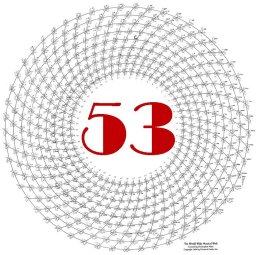Next Page: 10 – Other Ancient Cultures
Nine-Note Scales: The Murchanas
Starting from the note A, Indian theorists employ a nine-note scale from which they create ragas of 9, 8, 7, 6, or 5 notes to the octave. There are 14 different murchanas or nine-note scales. In the ancient tradition, the ragas which choose the seven principal or most commonly used notes are called the suddha or pure muchanas. Here are the murchanas and ragas as explained by Alain Danielou in Music and the Power of Sound. First, let’s look at Danielou’s 22-note-to-the-octave sruti (and the tetrachords Danielou believed Indian musicians employed to build ragas or scales/modes), the template for his murchanas:
And next in this chapter are the murchanas themselves, as defined by Danielou. Generally, two of the nine notes are “substitute notes”; the scale may use B on the ascent and Bb on the descent….
If you would like to learn more about this chapter, “Nine-Note Scales: The Murchanas,” you can buy the entire book, The Grand Unified Theory of Music, in pdf form for $25 with hundreds of embedded musical examples of scales and chords from all over the world.
A free introduction to what The Grand Unified Theory of Music offers is on this website and includes both text and a few musical examples from each webpage. If you would like to learn more about this chapter and the full contents of this entire e-book, you can buy The Grand Unified Theory of Music for $25, with hundreds of embedded musical examples of scales and chords from all over the world — and ideas for how to set up your computer system —
HERE.
You’ll get a personalized password you can use to see the entire e-book. Inside the full book, you will also get a link to the complete pdf file of this e-book, which you can read on your Kindle or similar device. The links to the hundreds of mp3 sound files – the same ones you can hear on the website — will also be included. This is “Version 1.0” of The Grand Unified Theory of Music. Because it is an e-book, additions, corrections and improvements in the sound may be added at any time. The Grand Unified Theory of Music is Copyright © 2018 by Christopher Mohr. All rights reserved.
One person per password. Sharing this password with others is a violation of copyright. Do not allow others to use your password or link to the pdf file!

